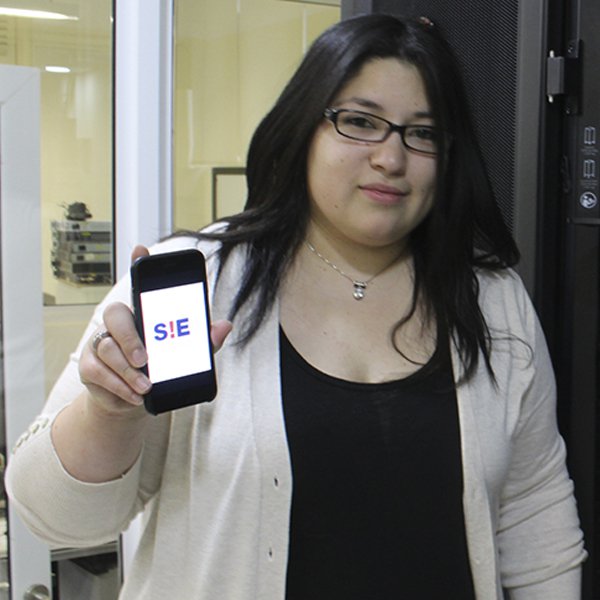Earthquakes and other natural
disasters are all too common in many parts of the world. One of the primary
difficulties posed by these catastrophes is their unpredictability, which
defies early detection systems and complicates disaster relief efforts. The
existing communication systems surrounding these crises tend to fail during
such disruptive events, during which quick, accurate and reliable information
is fundamental to the goal of saving lives.
Inspired as a child by her father, who worked for the Chilean Armed Services
Cryptography Service, and further motivated by the constant tremors in her
native country, in 2015, the then computer engineering student Barbarita Lara
founded SiE (Sistema de Información de Emergencia, or Emergency Information
System in English). Lara explains that the project kicked off in 2010, the same
year that an earthquake which scored an 8.8 on the Richter scale shook the
Southern Cone, claiming the lives of more than 800 South Americans. During this
earthquake, Lara happened to be one of the few mobile users with coverage
within her own personal network, and was able to connect friends residing
abroad with their loved ones in the affected area. Recurring events like this,
combined with Lara´s drive to leverage her knowledge, experience and
circumstances, converged to give rise to SiE, and have led to Lara´s
recognition as one of MIT Technology Review, Spanish edition´s Innovators Under
35 Latin America 2017.
SiE was born in response to the shortcomings of current information systems
during crisis scenarios which, according to SiE´s founder, are inefficient,
inoperable, incomplete and unreliable. With SiE, Lara offers a quick, reliable,
low-cost solution: a system directed at public authorities capable of sending
encrypted data with information regarding the event to smartphones, which
decipher this data and make it accessible to the general public without an
internet connection.
The way it works is simple: the data which emergency services or the government
itself wish to transmit are encrypted as audible, high-frequency sound waves
which leverage the radio infrastructures which already exist in many countries
where SiE could be implemented to broadcast this information. Radio waves can
cover large distances, reaching remote areas where solutions of this type are
needed most. On the other end of these transmissions, a simple mobile app
processes these radio waves and plays the information back to users through the
microphone of any mobile device or computer.
Although SiE has been heavily supported by the Chilean government and large
players in the tech industry, its next, great challenge will be to finalize the
negotiations with the ONEMI (the Chilean National Office of Emergency of the
Interior Ministry) in order to reach the general public. The ONEMI is the only
organization authorized to issue official emergency alerts in Chile, and would
be SiE´s main client. Once authorized, the service can be taken to market and,
although Lara´s goal with SiE is not to generate profits, the inherent benefits
of adopting this service to improve the flow of vital information during
emergencies promises to ensure the long-term
scalability and sustainability of the service.
Several members of the jury panel for the Innovators Under 35 Latin America
2017 competition agreed that SiE is already revolutionizing the way governments
and emergency response systems frame their communications with the public.
"This innovative young woman´s solution is especially relevant in Latin
America, a region which is home to six of the 10 cities most vulnerable to
natural disasters worldwide," highlights the advisor to the executive vice
president of the Inter-American Development Bank and jury member for the
Innovators Under 35 Latin America 2017 competition, Rafael Anta. The
Intraentrepreneurship and Change Management Director at SAFRAN, Oliver Leclerc,
coincides, stating more simply: "[SiE] is a smart, simple and practical
solution."




